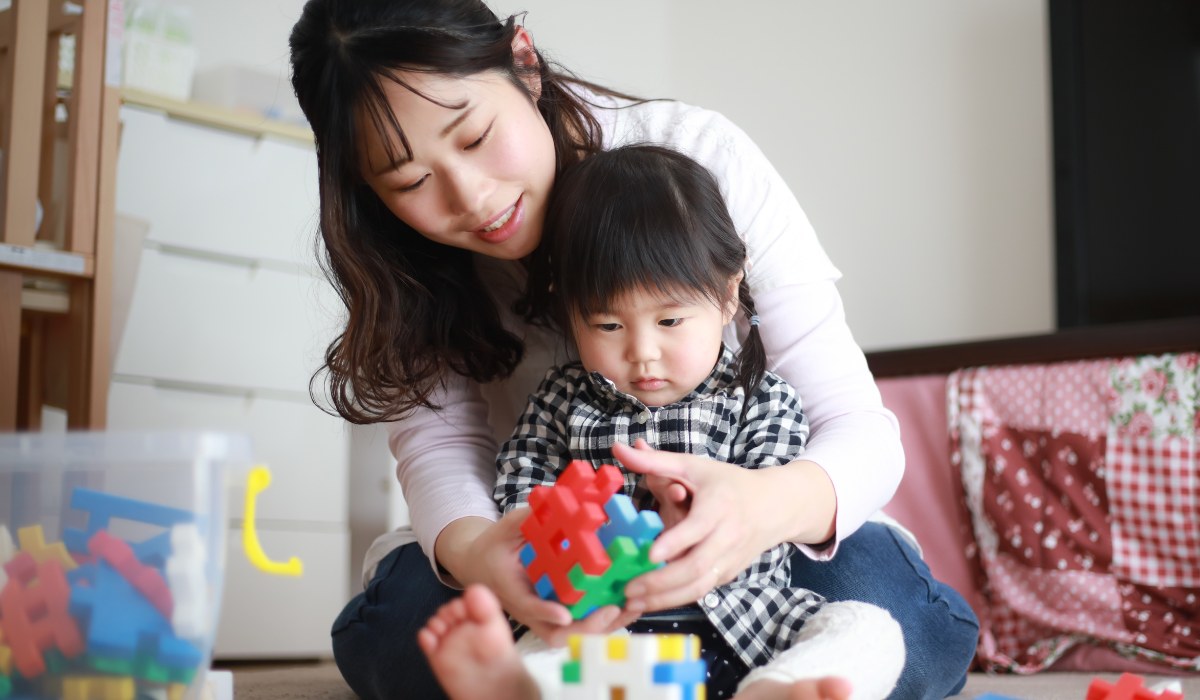Key Points:
- These 10 ABA strategies help parents make daily routines more structured, motivating, and meaningful for autistic children.
- Simple, consistent reinforcement and play-based learning build communication and independence.
- Parents can integrate ABA techniques at home to make therapy fun, natural, and effective.
When your child is autistic, everyday moments—getting dressed, sharing toys, or responding to a question—can sometimes feel unpredictable or challenging. Applied Behavior Analysis (ABA) therapy offers a structured, science-backed approach that helps families understand why behaviors happen and how to encourage positive change.
The good news? Many ABA strategies can be practiced at home. When parents learn how to use these techniques in natural settings, therapy extends beyond the clinic—turning daily life into meaningful opportunities for growth.
Below are ten ABA techniques that can help you support your child’s learning, communication, and social skills—while keeping the process enjoyable and rewarding.
Understanding ABA: Why It Works for Autistic Children
ABA therapy focuses on how behavior works and how learning happens. It’s rooted in positive reinforcement—rewarding desired behaviors so they’re more likely to happen again.
Children with autism often thrive with structure and predictability. ABA breaks complex skills (like brushing teeth or asking for help) into smaller, teachable steps. As your child succeeds at each stage, confidence builds—and so does independence.
When delivered consistently, ABA therapy can help improve communication, social interactions, self-regulation, and academic readiness. That’s why collaboration between therapists and parents is so important—because consistency is where the magic happens.
1. Positive Reinforcement: Reward What You Want to See More Of
Reinforcement is the foundation of ABA. It’s how your child learns that certain actions lead to good outcomes.
When your child shares a toy, follows a direction, or uses words to ask for something—acknowledge it right away. The reward can be a smile, a high-five, or something tangible like a favorite snack or toy.
Examples of reinforcers:
- Social praise: “I love how you asked so nicely!”
- Preferred activities: Extra time on the swing or tablet.
- Small treats: A sticker or one piece of a favorite snack.
The key is timing. Reinforcement should come immediately after the behavior, so your child connects their action to the reward. Over time, natural reinforcement (like pride, social approval, or satisfaction) replaces external rewards.

2. Task Analysis: Breaking Skills into Manageable Steps
Many daily activities—brushing teeth, tying shoes, packing a school bag—have multiple steps that can overwhelm a child with autism. Task analysis helps by breaking each activity into smaller, sequential steps your child can master gradually.
For example, instead of “brush your teeth,” try:
- Pick up the toothbrush.
- Open the toothpaste.
- Squeeze a small amount onto the brush.
- Brush top teeth, then bottom.
- Rinse mouth.
- Put the toothbrush away.
Each small success builds confidence. You can use verbal prompts, visuals, or modeling to guide your child. Once they master one step, fade your support and encourage independence.
3. Prompting and Prompt Fading: Supporting Independence
Prompts are cues that help your child learn a new skill. These can be physical (hand-over-hand guidance), verbal (“Say hi”), or visual (a picture card showing what to do).
At first, you may need to provide more support—but the goal is always independence. Gradually fade prompts as your child gains mastery.
For example, if your child needs a hand gesture to wave goodbye, move to a verbal reminder, then eventually let them wave on their own. Prompt fading prevents dependence and encourages self-initiated behavior.
4. Discrete Trial Training (DTT): Building Skills Through Repetition
Discrete Trial Training is a structured teaching method that breaks learning into clear, repeatable trials: instruction, response, and reinforcement.
For example:
- You say, “Point to the apple.”
- Your child points correctly.
- You say, “Great job!” and offer a small reward.
Each mini-lesson lasts just a few seconds, but through consistent practice, your child learns and retains new concepts—colors, shapes, words, or even social rules.
Parents can use DTT during short, focused moments each day. Keep sessions playful and brief to maintain engagement.
5. Natural Environment Teaching (NET): Learning Through Play
Not all learning happens at the table. Natural Environment Teaching (NET) takes place during real-life activities—like playing, cooking, or shopping.
If your child loves building with blocks, you can encourage communication by prompting:
- “What color block do you want?”
- “Say ‘tall tower!’”
- “Let’s count how many we have.”
Because learning happens in a natural context, skills generalize better to everyday life. This makes therapy feel less like “work” and more like fun interaction between parent and child.
6. Functional Communication Training (FCT): Replacing Problem Behaviors with Words or Gestures
When children can’t express what they want, frustration often turns into behaviors like crying, yelling, or hitting. Functional Communication Training (FCT) teaches them to communicate their needs appropriately.
The first step is understanding why the behavior occurs—what your child is trying to communicate. Are they asking for a break? Seeking attention? Avoiding a task?
Once you identify the function, replace the behavior with a communication alternative that works for your child—like a word, picture card, or sign.
For example:
- Instead of throwing a toy, teach them to say, “Help me.”
- Instead of screaming, teach them to use a “break” card.
Over time, as these new skills are reinforced, problem behaviors decrease naturally.
7. Visual Supports: Turning the Abstract into Something Clear
Autistic children often learn best through visuals. Visual schedules, choice boards, and cue cards can help them predict what comes next and feel more in control.
You can use simple visuals to support transitions or routines:
- Morning checklist (toothbrush, clothes, breakfast).
- “First-Then” boards (“First homework, then playtime”).
- Emotion charts to identify how they feel.
Visual supports reduce anxiety and give your child tools to communicate—even before they have the words.

8. Modeling and Imitation: Showing Instead of Telling
Children on the spectrum often learn better by watching than by listening. That’s where modeling comes in.
You can demonstrate desired behaviors—like saying “thank you,” washing hands, or taking turns—and encourage your child to imitate. Praise or reward even small attempts.
For example, if you model saying “bye,” and your child waves, celebrate that effort. Imitation helps bridge the gap between observation and action, and it’s a key building block for language and social learning.
9. Shaping: Rewarding Progress Step by Step
Shaping means reinforcing small steps toward a larger goal. This technique is especially helpful when a skill feels too big to master all at once.
Let’s say you’re teaching your child to say “water.” You might first reinforce when they say “wa,” then “wat,” and eventually the full word. Each approximation gets praise or a reward.
By celebrating progress at every level, you keep motivation high and frustration low—helping your child succeed at their own pace.
10. Generalization: Helping Skills Stick Across Environments
A skill learned in therapy should work in the real world, too. Generalization means applying learned behaviors across different people, places, and situations.
If your child learns to say “thank you” in a session, practice it at home, at the park, and in stores. Encourage different family members to prompt and reinforce the skill.
Generalization ensures that learning is flexible and lasting—not something that only happens in a therapy room.
Making ABA a Part of Everyday Life
You don’t need to be a therapist to make ABA work for your child. In fact, the best results happen when parents are active partners in therapy.
Here’s how to integrate these strategies naturally:
- Use reinforcement often—celebrate small wins.
- Turn routines into teaching opportunities.
- Stay patient—progress looks different for every child.
- Collaborate closely with your child’s ABA team.
Consistency is key. Even five minutes of intentional interaction a few times a day can make a big difference.

How ABA Therapy Supports the Whole Family
ABA therapy isn’t just about reducing challenging behaviors—it’s about building meaningful connections and helping children reach their full potential.
When you work with a team like Apek ABA, you gain more than therapy sessions. You gain guidance, education, and ongoing support to make progress sustainable. Therapists collaborate closely with families, designing individualized programs that match each child’s strengths and challenges.
Whether your goal is improving communication, increasing independence, or strengthening social skills, ABA therapy provides a structured path forward—one step at a time.
The Takeaway: Empowering Parents Through ABA
Supporting your child with autism is a journey—one filled with discovery, patience, and growth. ABA techniques give you the tools to turn daily routines into opportunities for learning and connection.
Every smile, gesture, and word is progress. By understanding your child’s behavior, reinforcing what works, and staying consistent, you’re helping them build the skills to thrive.
If you’re ready to take the next step in your child’s development, Apek ABA offers evidence-based ABA therapy in Virginia and Georgia. Our compassionate team helps families create individualized plans that bring learning into everyday life—where it matters most.
Reach out today to discover how ABA therapy can empower your child—and your family—to move forward with confidence.

